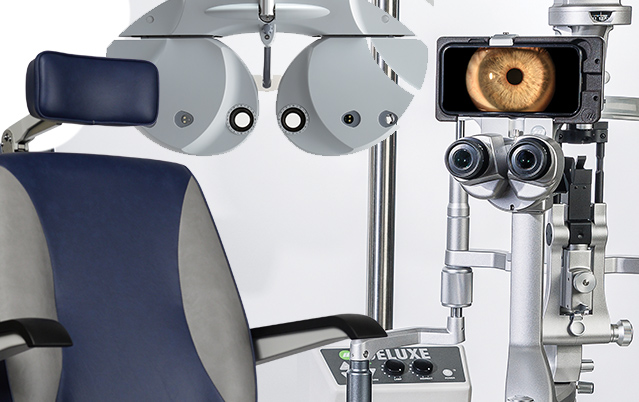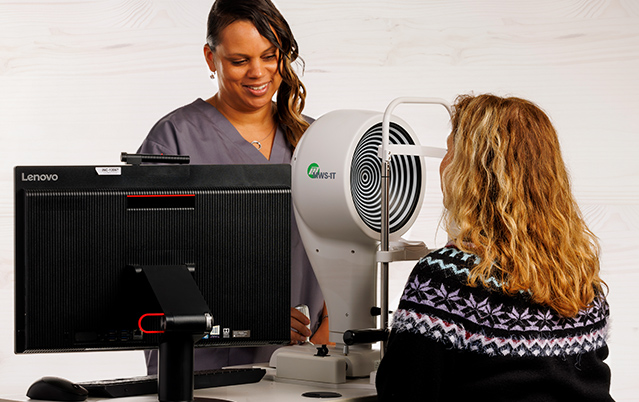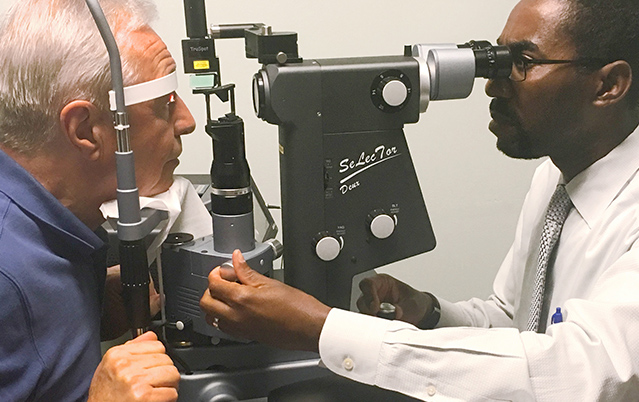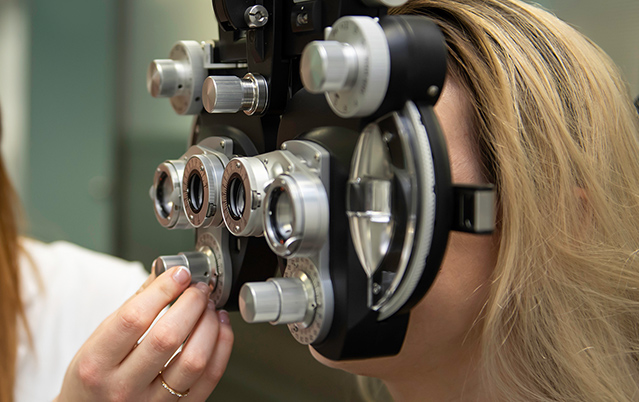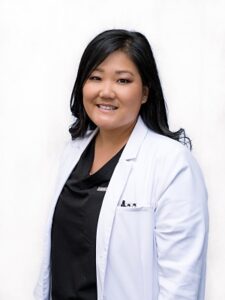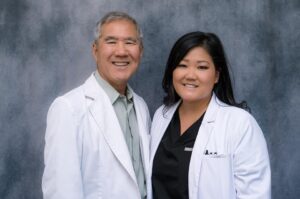In the small agricultural community of Sanger, California, with its 26,000 residents, Kebo Optometric Group has been the destination for eye care and eyewear. Brianna Kebo, OD, recently took an ownership role in the practice that her father, Larry Kebo, OD, established 46 years ago.
Now semi-retired, Dr. Larry Kebo comes in once a week to see his longtime patients, while Dr. Brianna Kebo has taken the reins and embraced modern advancements and efficiency to enhance patient care.
“My dad recognized the importance of updating equipment and embracing technology,” Dr. Brianna Kebo says. The practice has utilized advanced tools like Optos and OCT, so the next step was to implement the same technological advancements in the exam room. When Dr. Brianna Kebo joined the practice after her graduation from Southern California College of Optometry at MBKU, she suggested that they add a TRS system from Marco, similar to the one she trained on at school. “I believe an automated system is more efficient; it integrates with our EMR software with a click of a button instead of typing information into the chart” she explains.
Streamlined Workflow
One year ago, during a significant office remodel that included adding an exam room, Dr. Brianna Kebo decided it was time to upgrade the practice further. “We started about five years ago with one automated lane. Now we have all four exam lanes automated,” she says. The practice now boasts four exam lanes and two pretesting areas with autolensometers and autorefractors, all from Marco. During the remodel, she also updated the chairs and stands from Marco. She added a chair glider for her ADA-accessibility room, which also doubles as a family room. “There was nothing wrong with what we had, but I wanted every exam room to have a cohesive look and properly function with Marco Connect.”
The transition to automation has added efficiency by streamlining the workflow. “The change in process from manual to automated refractions has reduced errors in how we are putting prescriptions in.” The automated systems allow for direct input into the electronic medical record (EMR) with the push of a button, enhancing accuracy and efficiency. “Our technicians are not typing in pre-testing intake information either, but instead transferring electronically through Marco Connect.”
Marco Support
Dr. Kebo appreciates the support she receives from Marco. “From the very first lane we did, Marco’s sales and service representatives have been amazing,” she says. They return phone calls and emails promptly, and her service representative will even have her walk through an issue on FaceTime so that he can troubleshoot with her on the spot.
Training and installation were seamless, thanks to the local support team that worked around the practice’s schedule. A third optometrist, Cristian Chaires, OD, joined the practice in January. A recent graduate, he had been trained on manual phoropters, but it took less than two days for him to feel confident with the Marco system, she says. Should she need support that requires a piece of equipment to be removed for service, Marco sends a loaner. “We’ve never had an exam room down or at least not for long,” she says.
One of the great features is her ability to show patients what their vision looks like with their prescription in their current eyewear and what it could look like. “Instead of answering their questions about whether it’s a big difference, I can say, ‘Let me show you.’ For some patients, that 0.25D change is noticeable, and they’ll feel more confident and happier about buying new eyewear,” she says. Her optical staff also notes that a number of patients come back a week or so after their exams, ready to buy new eyewear after all. “We are not high pressure about sales, and patients appreciate having a chance to think about it,” she says.
Medical Discussions
By being able to spend less time on the refraction process and showing patients quickly the change in prescription, she can spend more time with patients talking about medical needs and ocular health. That’s particularly important in her rural community where patients would prefer to stay in the community for their care. “We want patients to know that we’re doing everything we can to provide the best care,” she says. “Our main revenue source is still eyewear, but adding efficiency with our exams gives us extra time to address their medical needs,” she says.

